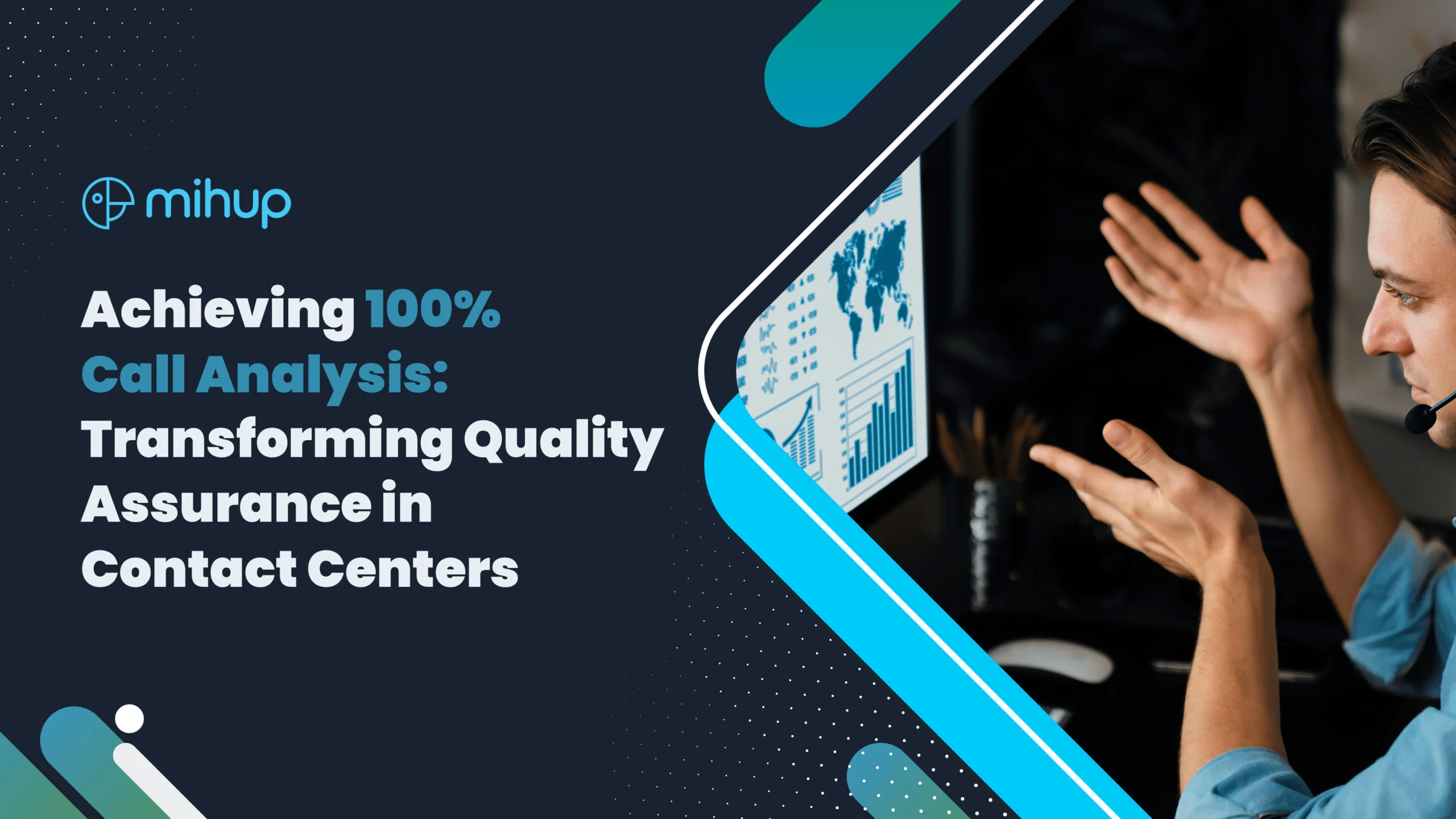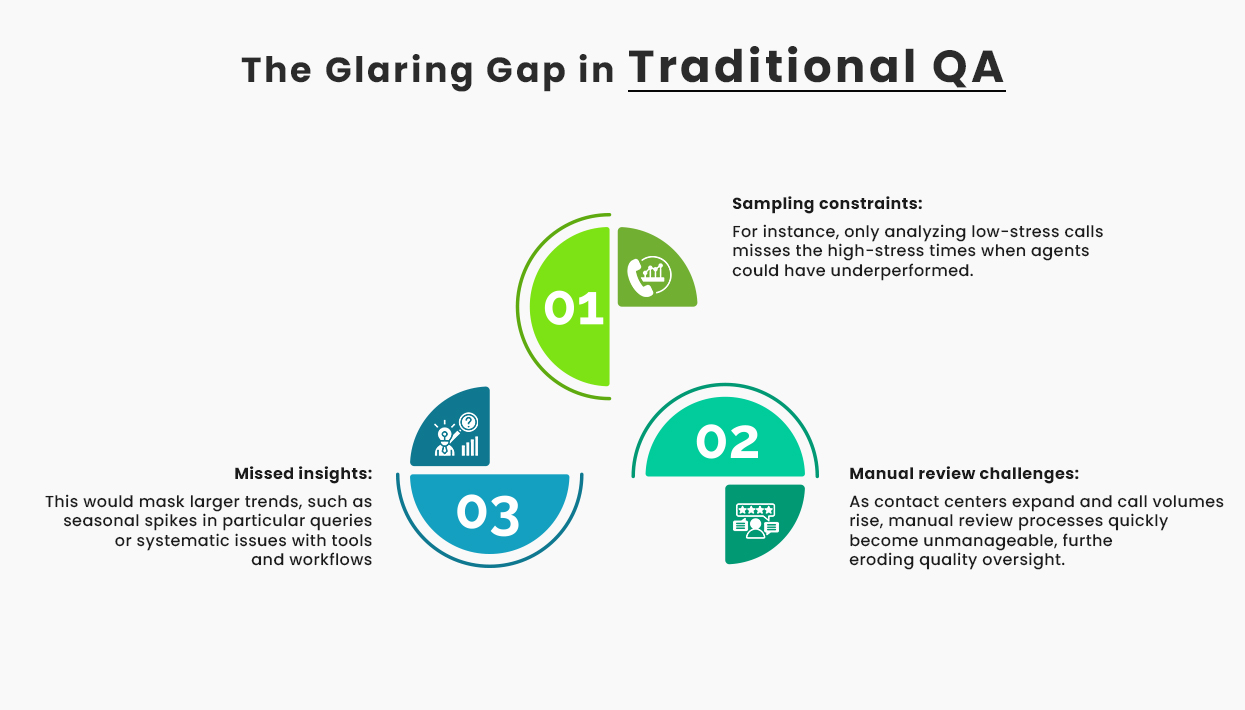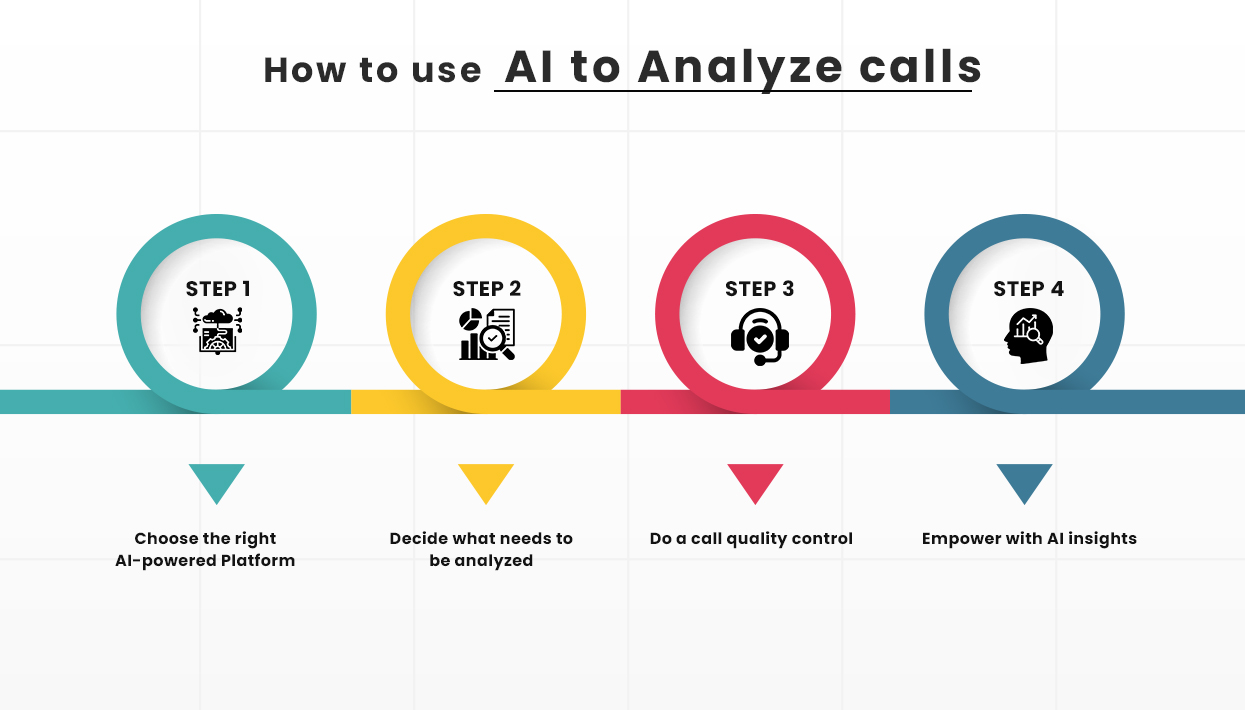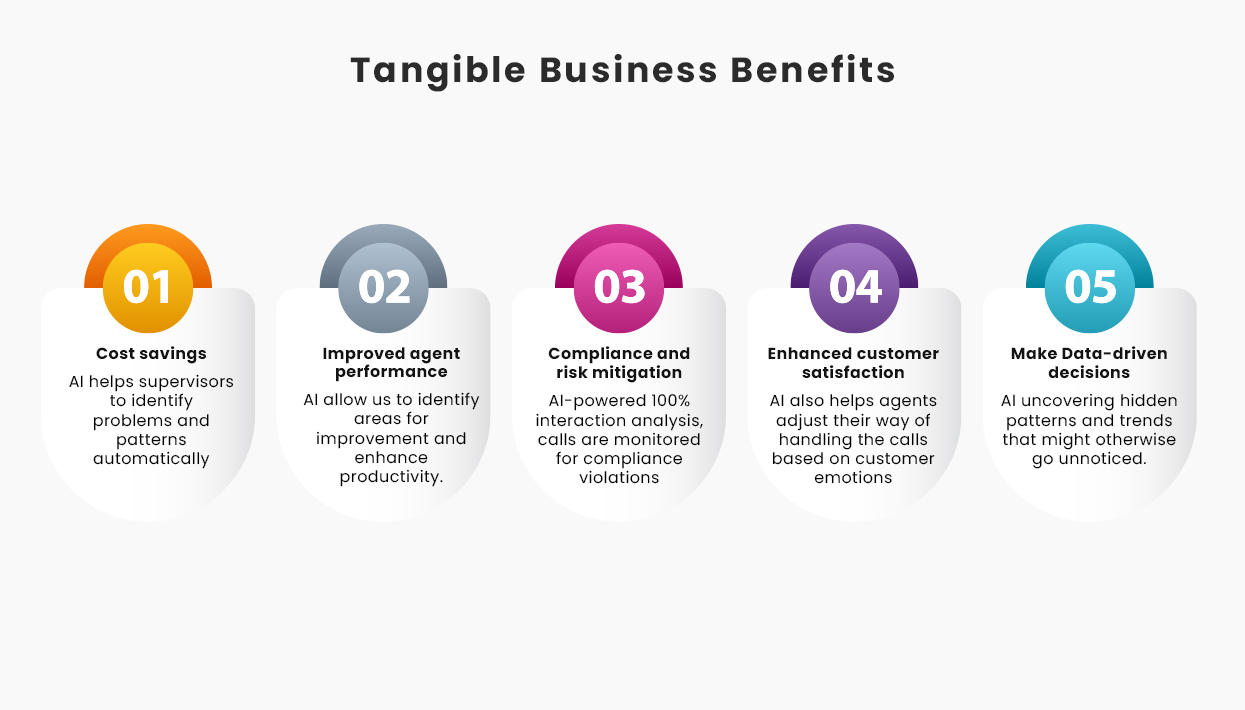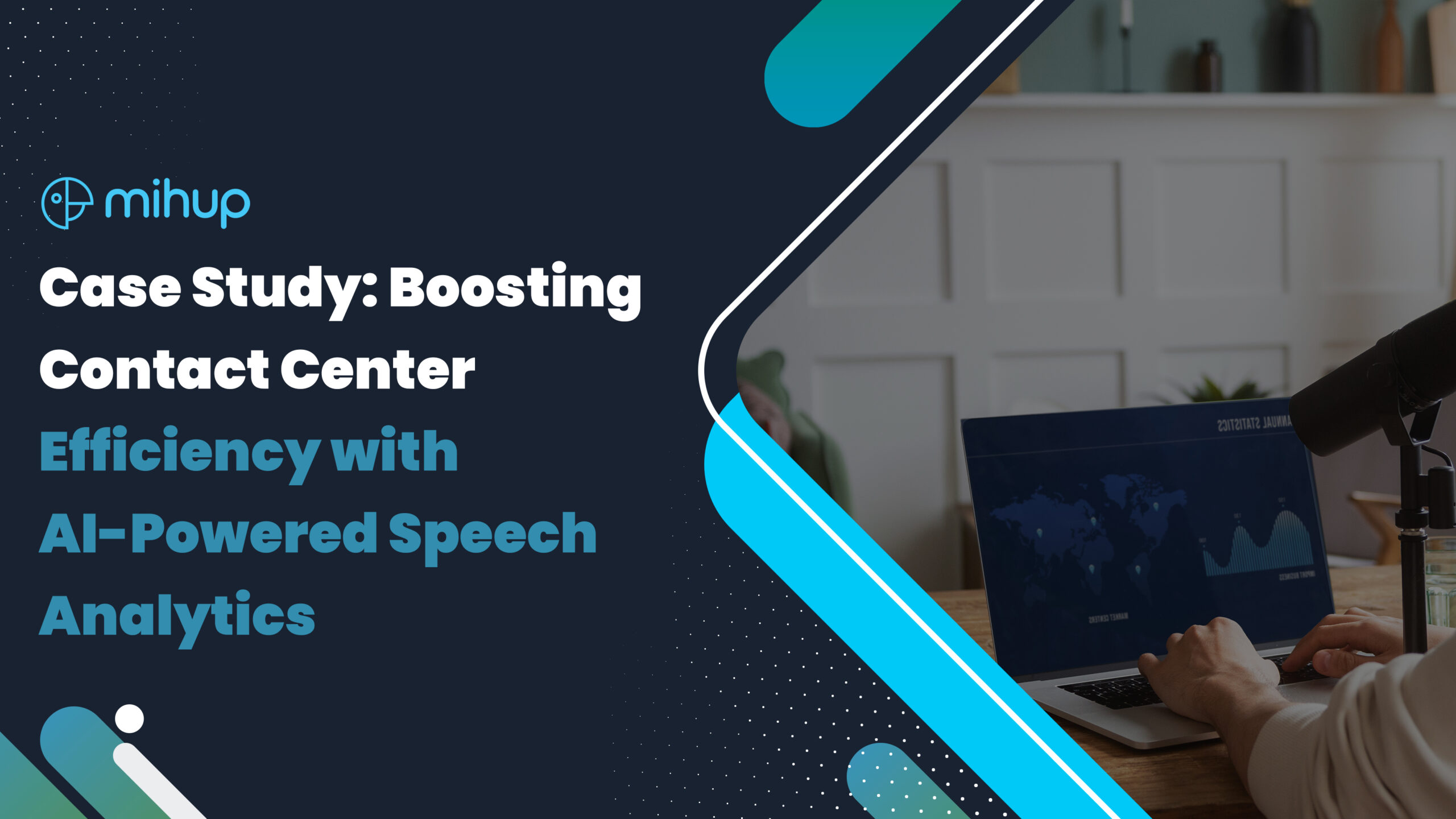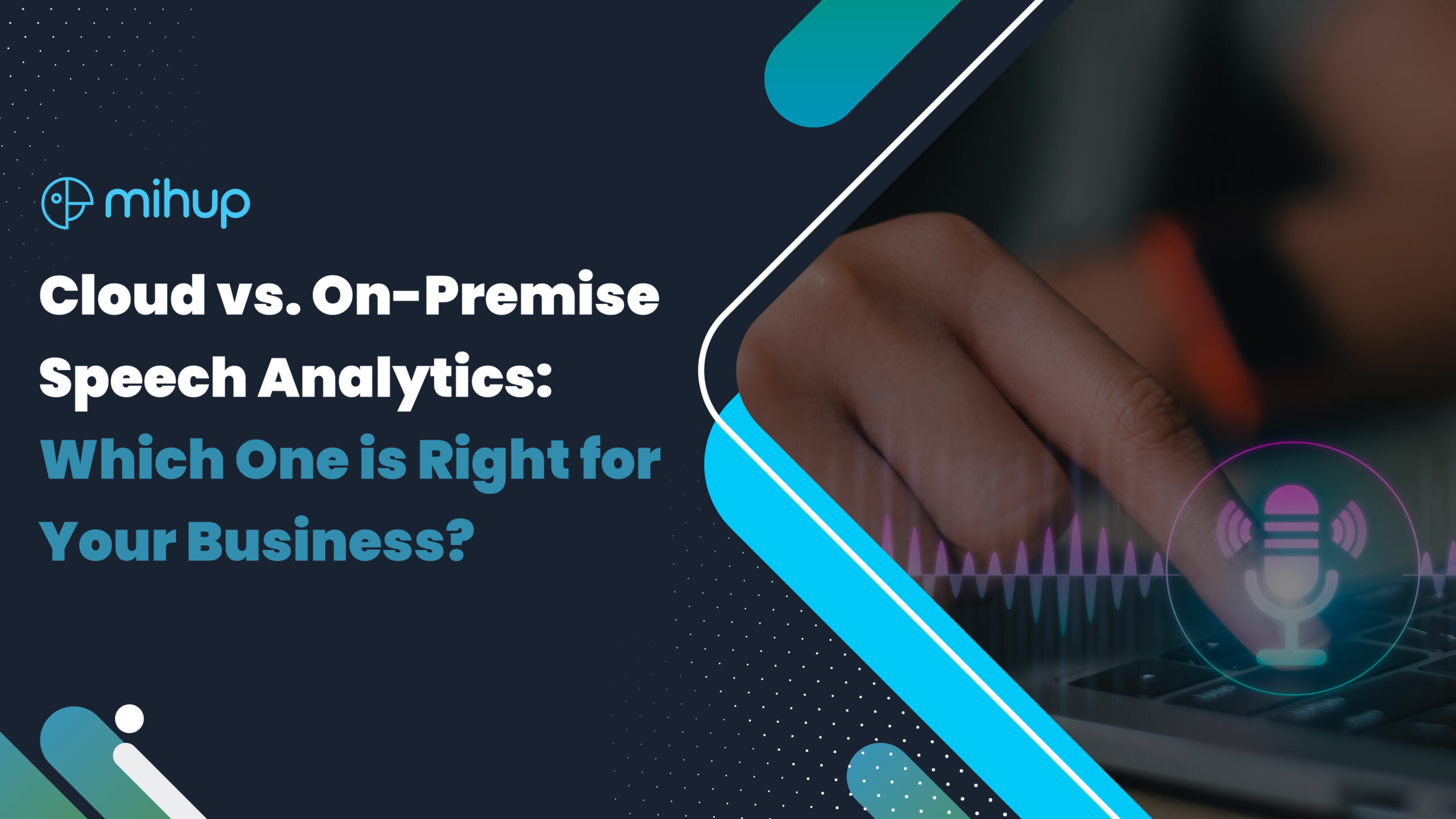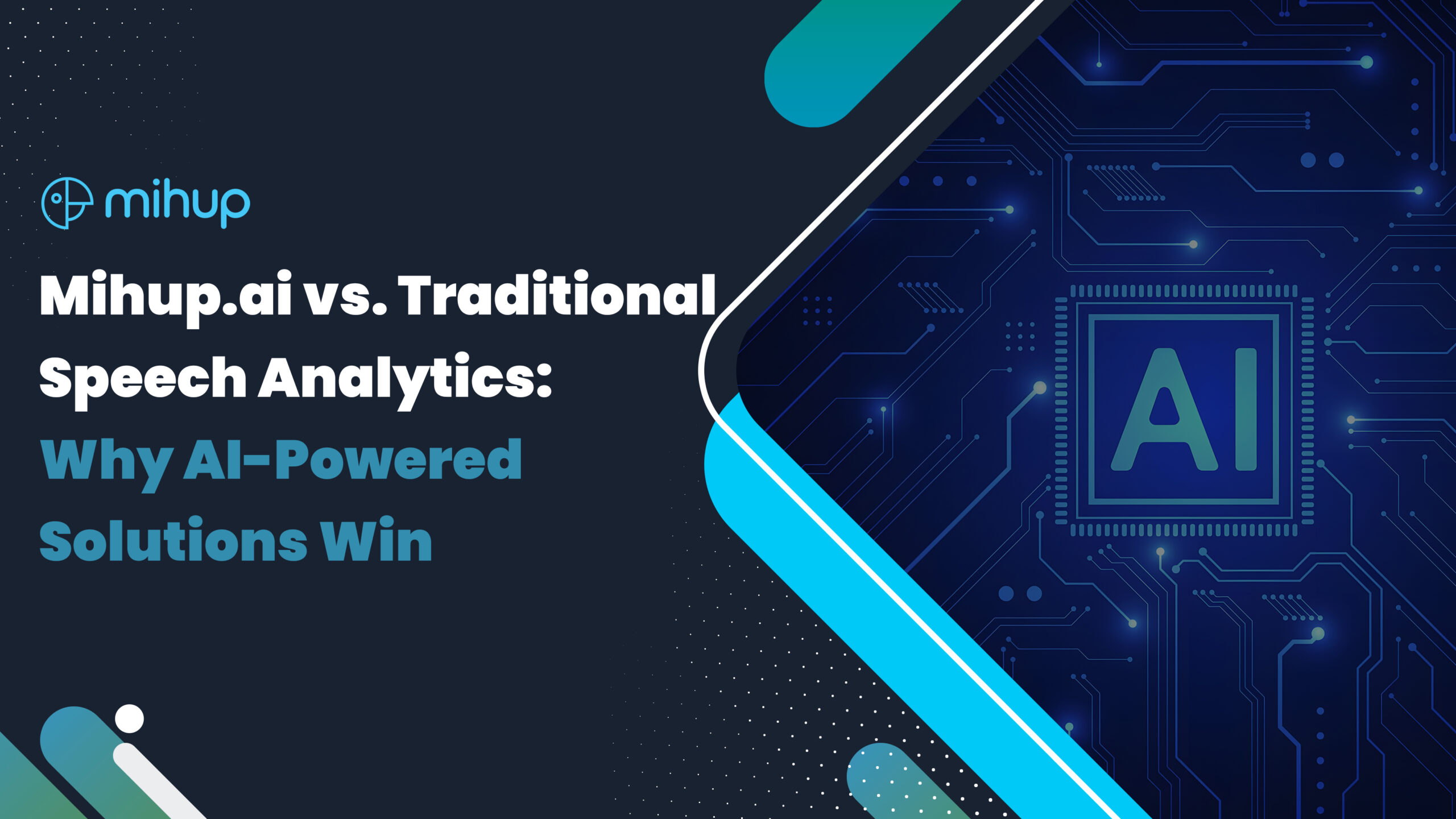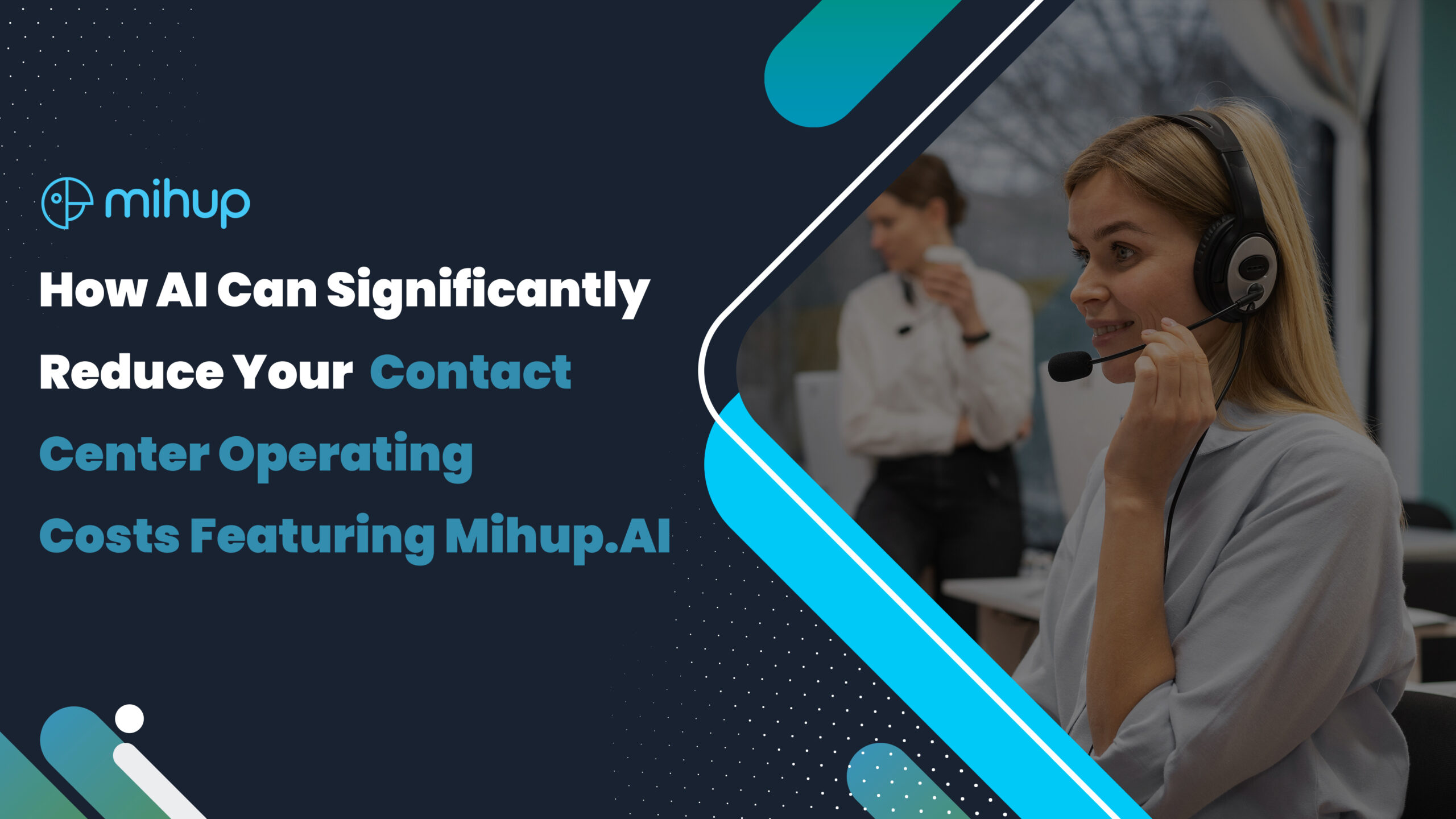Are you sure that your quality assurance process is optimized? If you have ever managed a contact center or have worked in it, you know the struggle. On a day-to-day basis, calls come in one after another, agents try their best to solve problems, and supervisors hustle to ensure customers leave satisfied while managing other tasks. But when it comes to quality assurance (QA), many centers fall short—not because they don’t care, but because traditional QA methods just can’t keep up.
We have been in the same room with QA teams to discuss their struggles while reviewing calls. We analyzed the whole process, and we observed that they were only able to review a few calls manually. And guess what? The insights were helpful, but what about the 95% of calls that have not been listened to and the mine of data and insights that were missed because of that?
Well, It is a common problem but it’s no longer one that we have to accept. With the recent advancements in the AI industry, 100% analysis of calls is no longer a vision, but a new standard.
The Glaring Gap in Traditional Quality Assurance
Let’s face it: traditional QA feels like peering through a keyhole. Supervisors usually review a small sample of calls—maybe 3-6%—and try to draw conclusions about agent performance and customer satisfaction from there. While this traditional approach provides some insight, it is far from reality. The traditional QA methods may have worked a decade ago when in contact centers fewer interactions were handled, but today, it’s woefully inadequate. Here’s why:
Sampling constraints
Out of 1,000 calls, only 20-50 might get reviewed. This small sample size creates an incomplete and potentially misleading picture of overall performance. What if a major compliance breach happened in any of the other 950 calls? Calls that hold important insight—recurring customer pain points or emergent product issues—will never surface; chances to improve are lost. The sample size is always too small to reflect diversity in interaction, which draws biased conclusions for decision-making. For instance, only analyzing low-stress calls misses the high-stress times when agents could have underperformed.
Manual review challenges
It takes time to listen to the calls, and even the very best reviewers have limited capacity. On average, a QA analyst can only manually go through a few calls during the day. Human review brings in people’s biases, leading to subjective evaluations. For example, two analysts might give the same call different ratings just because of the interpretation of a tone or the sufficiency of a response.
Agents are often given feedback on calls days or weeks after the call took place, making it very difficult for them to take action. As contact centers expand and call volumes rise, manual review processes quickly become unmanageable, further eroding quality oversight.
Missed Insights
When the QA uses small samples and manual processes to analyze, key patterns like recurring customer complaints or trends in agent performance often slip through the cracks. Using this traditional QA approach, repeated complaints or unsolved issues might go undetected, causing frustration among customers and leading to increased churn rates. Chances are that skill gaps for agents are likely to persist without an overarching view of performance since QA teams will fail to recognize the exact areas that need training.
This would mask larger trends, such as seasonal spikes in particular queries or systematic issues with tools and workflows, and leave the organization unprepared to respond proactively to them.
What is AI-Powered Call Analysis?
AI in call analysis offers the solution to the limitations of traditional QA. Imagine that in your contact center, every single call is analyzed. Not by overworked supervisors or QA teams but by an intelligent system that can easily analyze 100% of interactions within hours. This is the promise of AI-powered call analysis. Understand in detail how it overcomes the limitations of the traditional QA process:
Comprehensive Monitoring
It doesn’t cherry-pick calls but monitors 100% of interactions, ensuring you get a complete view without anything being overlooked. Each word, tone, and pause is captured, and every interaction from multi-channel email, call, or social media is processed to give actionable insights.
Real-Time Insights
AI instantly helps you know when a customer is frustrated, or an agent is going off-script. This is possible by providing actionable insights at the moment. AI can detect patterns, sentiments, and potential issues as they occur, allowing supervisors to intervene proactively.
Objective Performance Evaluation
With reliance on data and pre-set metrics, AI is bias-free; it offers an unbiased and fair evaluation of the agent’s performance. It is data-driven, not gut-feeling-driven, ensuring fair and consistent assessments.
For example, A fast-growing digital lending company not only improved its QA process to 5x, reducing the time from days to minutes. It also enabled the QA team to focus on strategic improvements. By getting real-time insights on each interaction, the QA team was able to proactively identify and resolve high-risk interactions, significantly reducing escalations and compliance issues by 85%. The implementation of interaction analytics software in their system and on-time actionable insights provided by this tool helped them improve their collections by 30%.
How to use AI to Analyze calls
If you’re considering AI-powered call analysis, let’s learn more about AI and how to leverage it to analyze calls and maximize their potential:
#Step 1 Choose the right AI-powered Platform
Pick a platform or tool that suits your needs and has features like sentiment analysis, compliance monitoring, and easy integration with your existing tools and telephony systems. Make sure it scales as your call volume grows and has good customer support to guide you.
#Step 2 Decide what needs to be analyzed
AI can analyze a wealth of data, from identifying key topics to analyzing customer sentiments. That’s why it’s essential to clarify your goals and objectives.
For example, if you wish to boost your agents’ performance, you might want to analyze key performance indicators and key trends to identify the moment when agents were performing well or lacking in their service goals. AI can find trends, monitor keywords, and measure quality indicators. You just have to define your focus to get the best results.
# Step 3 Do a call quality control
To perform a call quality control you need to analyze call transcriptions. AI can help with generating accurate call transcriptions, allowing you to review 100% of interactions and identify areas for improvement in every interaction between agent and customer. AI-powered call analyses review call transcriptions at a scale that ensures uncovering trends, issues, and customer preferences. These actionable data and insights enable informed decision-making to improve call center processes and customer satisfaction by helping managers identify areas of improvement and decide if agents need additional training.
# Step 4 Empower with AI insights
Use AI findings to coach agents, resolve customer concerns faster, and even automate repetitive tasks like call summaries. Provide agents with real-time suggestions during calls to improve their performance on the spot.
AI call analysis doesn’t just monitor—it transforms. Start small, adjust as you go, and watch it make a big impact on your contact center’s efficiency and customer satisfaction.
Tangible Business Benefits
Now that you are well aware of how to use AI to analyze voice calls, you may be curious about the tangible benefits it can bring to your organization. Here are a few:
#1 Cost savings
If you consider the traditional manual QA process it is labor-intensive, time intensive and very expensive. But AI streamlines the whole process and quickly automates the analysis of large call volumes, eliminating the need for dedicated human resources and freeing supervisors from tedious tasks. This saves costs in terms of manpower and potential human errors. AI helps supervisors to identify problems and patterns automatically so they can prioritize important issues. As strategies can be identified and shared automatically this can lower costs associated with staff training.
#2 Improved agent performance
We have already seen how AI provides insights into agents’ performance based on key performance indicators. Actionable insights provided by AI allow us to identify areas for improvement and enhance productivity. Moreover, AI-generated call summaries significantly reduce after-call work, transcribing the calls quickly, and providing quick post-call notes, follow-ups, and manager reviews. This will save everyone’s time while making key points accessible to the agent for productivity. The targeted feedback provided helps the agents learn from their mistakes instead of guessing where they went wrong.
#3 Compliance and risk mitigation
By applying AI-powered 100% interaction analysis, calls are monitored for compliance violations, reducing the risk of fines and penalties. Through monitoring every interaction for compliance violations, organizations will be ahead of regulatory requirements, particularly in industries that offer financial services, healthcare, and telecommunications, wherein the risk of penalties due to non-compliance behavior can be drastic.
#4 Enhanced customer satisfaction
AI doesn’t just evaluate but it helps you to understand how customers feel during calls. AI also helps agents adjust their way of handling the calls based on customer emotions, showing empathy and better understanding.
Moreover, with the use of AI-powered call analytics, you can automate assessing how agents respond during calls, identifying areas for improvement such as handling of complaints, adherence to procedures, and response times. Automation allows supervisors to give specific feedback and thus, personalized training in the general improvement of service quality as well as ensuring satisfaction.
#5 Make Data-driven decisions
AI call analysis takes the guesswork out of the picture about decision-making by giving very accurate, actionable insights. It processes large volumes of data much more accurately than any human can, thus bringing forth patterns and trends that one would otherwise miss. It provides real-time analysis to give you immediate insights, which is critical in contact centers where things move pretty fast. Moreover, AI integrates well with other data sources, to give a 360-degree view of customer behavior.
Achieve 100% Call Analysis With Mihup.ai
If you think analyzing every customer interaction is still not possible with any tool or software. You must not have heard about Mihup.ai, a conversation intelligence platform that provides an application like Mihup interaction analytics. This tool can analyze your 100% interaction and provide actionable insights and data. With this, it also provides real-time agent-assist a tool that provides cues and suggestions in real-time during live interactions. It just goes beyond traditional sampling, ensuring no critical insights are missed. here‘s how Mihup.ai works effectively :
100% Call Analysis Works
Mihup.ai analyzes each call, identifies trends, measures performance using AI and automation, and marks the key areas for improvement. By converting calls into actionable data, it arms contact centers with full visibility.
- Automated transcription to provide accurate call records
- AI-driven monitoring of sentiments, compliance, and performance
- Real-time insights to take immediate action
Key Features and Advantages
Mihup.ai has developed a range of features aimed at making QA processes work as smoothly as possible:
- Sentiment Analysis: Understand customer emotions, and nuances to improve satisfaction.
- Compliance Monitoring: Ensure every call meets regulatory standards without missing any critical moment where violations and risk penalties have taken place.
- Customizable Dashboards: Customised metrics and actionable data or insights according to your business priorities.
- Scalability: Handles high call volumes effortlessly and scales with your business’s needs.
Why Mihup.ai Outperforms Traditional QA
Compared to traditional manual reviews Mihup.ai delivers unmatched value here’s how:
| Aspect | Traditional QA | Mihup.ai (AI-powered analysis ) |
| Call Coverage | Only reviews 2-5% of calls, leaving blind spots. | Reviews 100% of calls for full coverage. |
| Speed of Feedback | Delayed feedback, may take days or weeks. | Real-time results that can be taken into action right away. |
| Insights | Subjective and prone to human error. | Accurate, objective insights powered by AI. |
| Impact on Agent Performance | Limited feedback slows improvement. | Comprehensive insights boost agent performance. |
| Customer Satisfaction | Inconsistent quality monitoring affects CX. | Data-driven analysis improves customer outcomes. |
With Mihup.ai, 100% call analysis becomes effortless and transformative. It’s time to leave sampling behind and empower your contact center with smarter insights and better decisions.
Transform Your QA Process Today
If you’re tired of this manual sampling, working with incomplete data, and want to see what 100% call analysis can do for your team then make the right call with Mihup.ai. With tools like Mihup interaction analytics that integrate seamlessly into your existing telephone or dialer systems, they make the transition easy.
Schedule a free demo today and see how Mihup.ai can help you transform your QA process. Your agents, customers, and bottom line will thank you.
